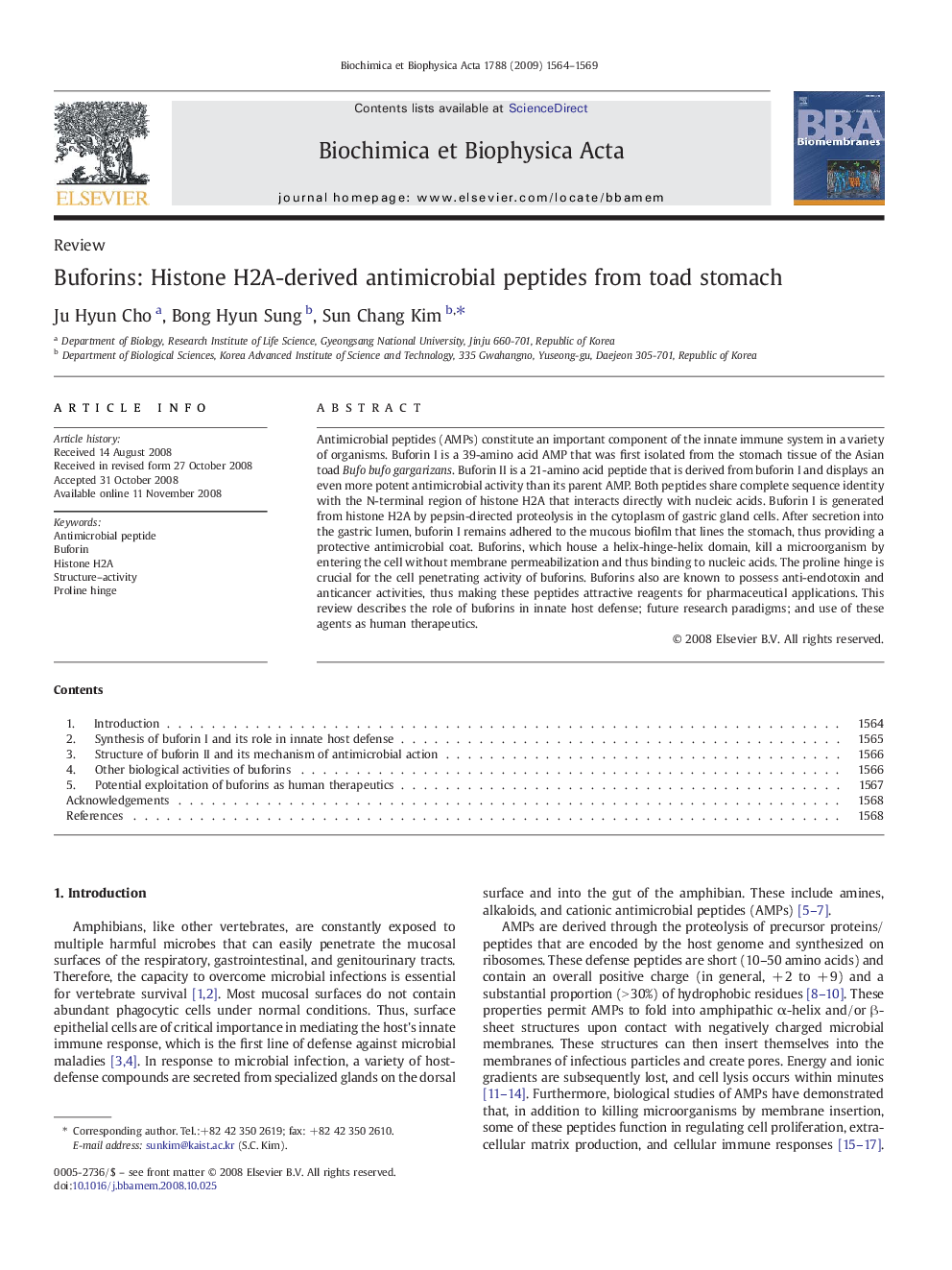| کد مقاله | کد نشریه | سال انتشار | مقاله انگلیسی | نسخه تمام متن |
|---|---|---|---|---|
| 1945094 | 1053252 | 2009 | 6 صفحه PDF | دانلود رایگان |

Antimicrobial peptides (AMPs) constitute an important component of the innate immune system in a variety of organisms. Buforin I is a 39-amino acid AMP that was first isolated from the stomach tissue of the Asian toad Bufo bufo gargarizans. Buforin II is a 21-amino acid peptide that is derived from buforin I and displays an even more potent antimicrobial activity than its parent AMP. Both peptides share complete sequence identity with the N-terminal region of histone H2A that interacts directly with nucleic acids. Buforin I is generated from histone H2A by pepsin-directed proteolysis in the cytoplasm of gastric gland cells. After secretion into the gastric lumen, buforin I remains adhered to the mucous biofilm that lines the stomach, thus providing a protective antimicrobial coat. Buforins, which house a helix-hinge-helix domain, kill a microorganism by entering the cell without membrane permeabilization and thus binding to nucleic acids. The proline hinge is crucial for the cell penetrating activity of buforins. Buforins also are known to possess anti-endotoxin and anticancer activities, thus making these peptides attractive reagents for pharmaceutical applications. This review describes the role of buforins in innate host defense; future research paradigms; and use of these agents as human therapeutics.
Journal: Biochimica et Biophysica Acta (BBA) - Biomembranes - Volume 1788, Issue 8, August 2009, Pages 1564–1569